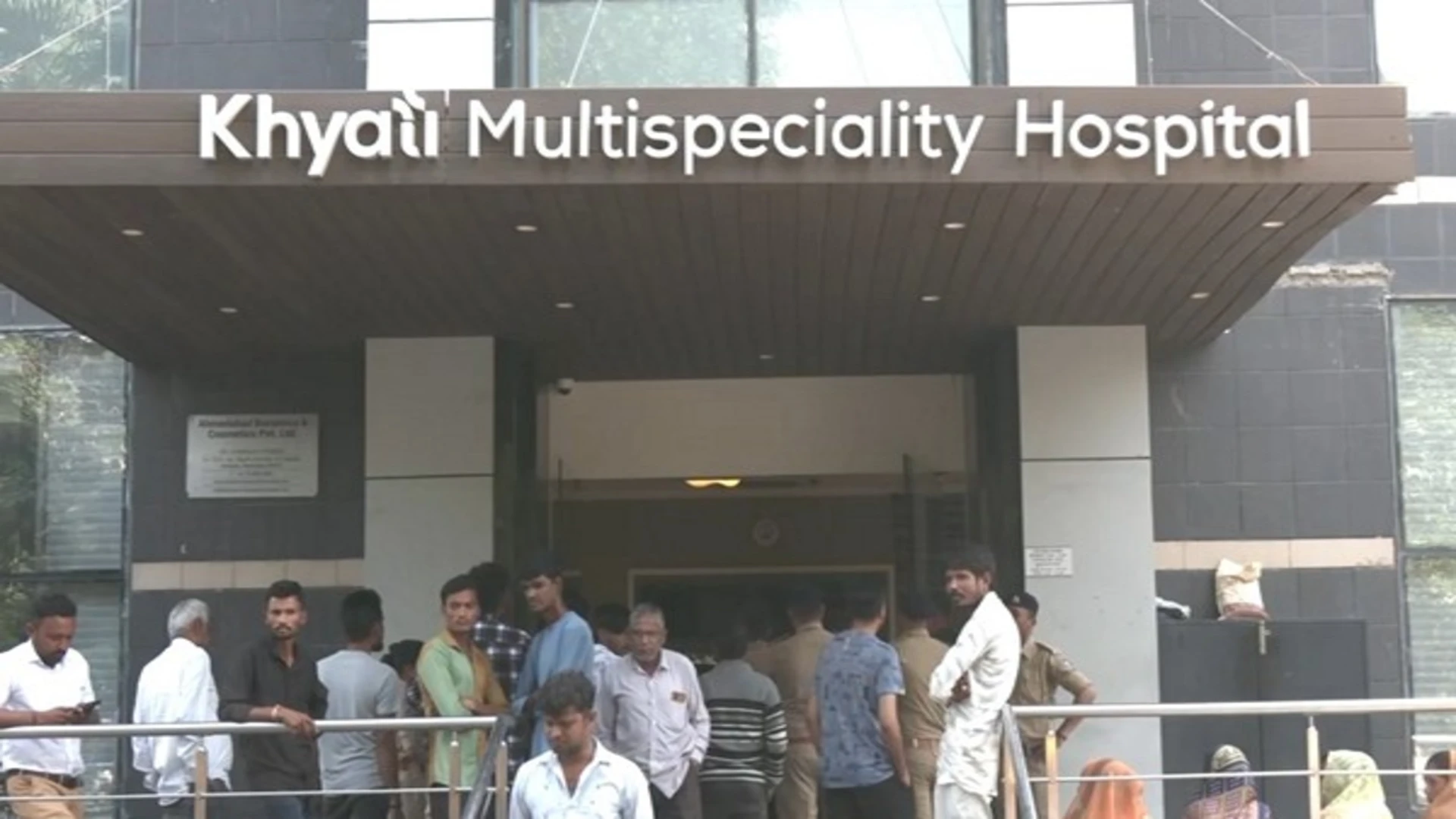
Overemphasis on massification of higher education has led to haphazard growth of higher education in the country. Despite all the efforts of the watchdogs, there has been a mushrooming growth of institutions that are following the outdated curriculum and churning out graduates devoid of competencies and skills needed by the modern world. There is a growing concern about the quality of institutions as well as programmes offered, as both are basic to influence the output of the system for all aspects of development in the field of education. It is higher education which ultimately provides the inputs to ensure quality at all levels. In fact, the products of higher education system are the ones which nurture all the tiers of education.
It stands to reason that different categories of institutions need to perform and demonstrate for quality both in respect of institutional profiles and programmatic structures. While there are some islands of excellence in the field of higher education, a large majority of institutions need to bring their institutional performance at least to an optimum level of quality. Though individual institutions strive to evolve their own norms and standards to provide quality education to the best of their resources, still it is important to ensure and establish the mechanism to benchmark the quality standards so that all institution operate above certain minimum threshold level.
The issue of quality at higher education level was deliberated at length at the time of formulation of the National Policy on Education (NPE), 1986. It was then realized that in a diverse system such as ours the issue of quality could not be addressed well without following a structured approach. Accordingly, it was recommended that the UGC should establish an accrediting body as an autonomous institution for the purposes of carrying out institutional accreditation. Pursuant to the recommendation, the UGC set up the National Assessment and Accreditation (NAAC) in 1994. Likewise, the AICTE also set up the National Board of Accreditation (NBA) to assess the qualitative competence of the programs offered by educational institutions from diploma level to post-graduate level in engineering, pharmacy, architecture and management related disciplines.
The process of accreditation continued on a voluntary basis for a period of five years. Since a large number of universities were not responding to voluntary process of accreditation, it was decided to make it mandatory in the year 1999. All the existing universities (225) were asked to get themselves accredited by 31st December, 2000. But when it did not pass the muster, the UGC brought out the Regulations in 2010. Notwithstanding all the measures, the pace of accreditation remained extremely sluggish because of systemic inadequacies on the one hand and the sheer size of the institutions on the other.
The NAAC has been using a structured approach for institutional accreditation encompassing seven criteria that include curricular aspects, teaching-learning and evaluation, research, consultancy and extension, infrastructure and learning resources, student support and progression, governance, leadership and management and innovations and best practices. There are multiple key indicators in every single criterion. The process of NAAC accreditation had undergone numerous changes since its inception. It started with accredited and non-accredited status, which in 1999 switched over to a five-point grading system followed by a nine-point grading in 2002. It made another departure in 2007 when it switched over to a four-point grading system based on Cumulative Grade Point Average (CGPA). Another change was affected in 2016 and since then it has been practising a nine-point grading system based on CGPA which has a wide range of eight intervals from “Not Accredited” (D) to “Accredited” (A++).
It is the CGPA which signifies the overall quality of an institution. The value of CGPA is directly related to quality of the institution. An analysis of the CGPAs, of 324 universities, accredited till March 2021, reveals that only 12% of the universities have secured the highest grade (A++), followed by 11% with A+ grade, 34% with A grade, 12% with B++ grade, 13% with B+ grade, 14% with B grade and 4% with C grade. The distribution of grades across 5,636 colleges, accredited so far, are almost similar, although not identical.
It is revealed from the latest data as on first of March 2021 that so far out of 967 universities and 39,931 colleges, only 367 universities and 8,244 colleges have undergone the first cycle of accreditation. It shows that 62% of the universities and 79% of the colleges are yet to go in even for the first cycle of accreditation. Obviously, the situation for the second, third and the fourth cycles of accreditation is much worse off than the first cycle. At a time when accreditation has become a seal of quality, the students have a right to know the standing of an institution before they make a final choice to sign a programne. But in the absence of accreditation of such a large number of institutions majority of the students and parents are deprived of making informed decisions.
The present accreditation mechanisms are not adequate to undertake accreditation of higher education institutions and programmes on a continuous basis due to multiple factors. Some of these factors are systemic and some are extrinsic. Although accreditation has been made mandatory for over a decade, the existing accrediting bodies are not able to perform the role connected with the proposed mandatory nature of accreditation because of the sheer size of the number of institutions.
Previous experience shows that accreditation of such a large number of institutions (about 51,757) is not possible unless there is a considerable increase in the number of Assessment and Accrediting Agencies (AAAs) in the country. Since we have different kinds of institutions of higher learning like the Central universities, state universities, private universities, institutions of national importance and colleges, it is also necessary to have a clarity whether we need independent accreditation agencies for different sets of institutions as well as for different areas of study by setting up separate set-ups for standards.
It is clear that the process of assessment and accreditation is a very time-consuming and staggeringly involved exercise as it does entail plenty of academic and managerial work coupled with greater institutional accountability. It begins with the preparation of the Self Study Report (SSR), followed by Data Validation and Verification (DVV), Determination of Prequalification, Peer Team Visit (PTV), Compilation of Quantitative and Qualitative Data (CQQD), Generation of Report and Declaration of Assessment Outcomes. The entire exercise consumes over a six month plus timeline and that too when 70% of the quantitative information is solicited by online and 30% qualitative data obtained through onsite visit by the peers. It is, therefore, imperative to have multiple agencies for accreditation of as large a system as that of ours. Thus, there has to be a mechanism for ensuring the availability of multiple Accrediting Agencies.
The NEP 2020 has laid a great deal of emphasis on accreditation. It has recommended that “through a suitable system of graded accreditation and graded autonomy, and in a phased manner over a period of 15 years, all HEIs in India will aim to become independent self-governing institutions pursuing innovation and excellence”. The current situation of accreditation, on the face of it, shows that implementation of this recommendation as well as the establishment of the Board of Governors (BoG), as envisioned in the NEP will be fraught with roadblocks and dead-ends. In fact, the idea of governance based on graded accreditation and graded autonomy would remain impossibly idealistic unless some alternative mechanisms for accreditation are found out.
The establishment of the National Accreditation Council (NAC), as a meta accrediting body, as envisaged in the new National Education Policy NEP, as one of the verticals of the Higher Education Commission of India (HECI) appears to be a good step in this direction. The UGC has already brought out the Regulations for recognition and monitoring of assessment and accreditation agencies which provide a good blue print for the proposed accreditation Council. It needs to be operationalised, and the sooner the better.
There really is no fundamental difference of opinion about the requirement of multiple agencies of accreditation to cover such a large number of institutions in a timely manner, and that too periodically, to keep a tab on their academic excellence. In fact, the need for multiple accrediting agencies has become an indispensable obligation. However, there are questions that would require intelligent and thoughtful answers. It is true that different domains of education require differential norms of accreditation. How can that be ensured? Should accreditation agencies be set up discipline-wise, programme-wise or institution-wise? How to forestall the entry of dubious agencies claiming their stakes for being accreditation agencies? How to ensure that only genuine professional bodies with right kind of assessors come forward to carry out academic audit of higher educational institutions in a transparent and objective manner? How parity of standards across multiple accrediting agencies would be ensured? And, how to ensure proper coordination and cooperation amongst multiple agencies?
These are some difficult and tricky questions which would require logical answers that are workable. Their execution would undoubtedly be a very complex and Herculean task. But it is worth endeavouring nevertheless. Surely, it would require enthusiastic professionals of high standing who could operate at the same level of commitment. Sure enough, there is no dearth of talent in academia who would be up for the challenge and make Herculean effort to accomplish Herculean task.
The writer is former Chairman, UGC. The views expressed are personal.
The NEP 2020 has laid a great deal of emphasis on accreditation. It has recommended that “through a suitable system of graded accreditation and graded autonomy, and in a phased manner over a period of 15 years, all HEIs in India will aim to become independent self-governing institutions pursuing innovation and excellence”.















